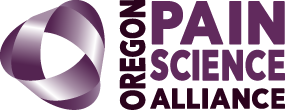Resource Elements
- Recurring pain from his gait change after foot amputation.
- His change in pain management is rooted in the three elements of the Pain Triangle
- He uses a 5 finger hand as a mnemonic device to recall useful practices for pain management.
- Daily stresses are the source of the recurring pains he is able to manage.
- Long-standing patterns of pain episodes treated with medications can be changed.
- During the COVID pandemic, the EMOTION aspect of the PAIN TRIANGLE became more of a focus for him.
- A “toolbox” of helpful ideas and practices to deal with pain is important.
As a teenager, I was physically fit due to Tae Kwan Do, soccer, and skateboarding. It was a big surprise when I threw my back out! Chiropractic and pain meds helped. I was told to use better lifting techniques. But over the years I’d throw my back out doing something stupid, get some pain meds, and push through, working as a carpenter.
Then in 2016 my left foot was injured and had to be amputated. My gait pattern as I learned to walk again hurt my back. My Physical Therapist started using the PAIN TRIANGLE to teach me about how pain works. Learning that pain is a protector, not a punisher, and that it has physical, cognitive, emotional components had a huge impact on my life. Previously, I thought pain was a punisher that I got rid of by popping pills and moving on with my day.
These recent years of COVID were hard and things have really gone kind of sideways. Previously I dealt more with the physical aspects of pain but then I started to dissect my pain and reevaluate emotions.
I’ve actually had more back episodes than usual and there’s nothing that has changed physically or cognitively. It’s just stress, stress, stress. Now I can totally see my emotions are affecting my back pain, not tissue damage.
I love the analogy that pain is like a smoke detector and when you hear it, you want to be looking for what the real problem is and taking care of that. In addition to the PAIN TRIANGLE, there are some other helpful things I learned from the “MMAPS” class that are my “toolbox” and I want to share them with you:
- THE HANDFUL OF HEALTH = Breath & Laughter, Water & Urination, Food & Pooping, Movement & Sleep, Attitude of Gratitude & Relationship. Just getting more oxygen into my body changes my pain experience. I try to eat well, get enough sleep and activity.
- MOTION IS LOTION: Heavy exercise isn’t as important as movement, even if it’s just done in a chair.
- THANKFULNESS: Despite stresses, I’ve got a lot to be thankful for—family, job, friends. I still do take hydrocodone if nothing else in my “toolbox” has helped. If it’s three o’clock in the afternoon and I won’t make it through the rest of my workday, I do mindfully decide to take some pain medication. That’s my story. I hope it encourages somebody, and thanks for listening.
The transcript for this video can be viewed as closed caption on YouTube. It can also be accessed via a 6-page PDF by clicking the link below.
Views: 902


